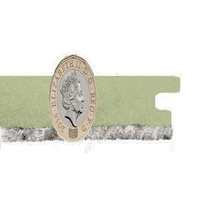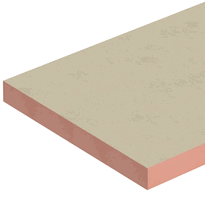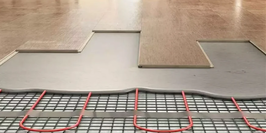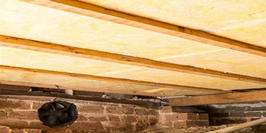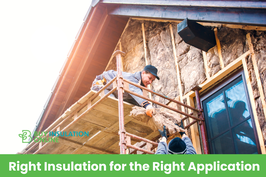Garage Floor Insulation
Garage floor insulation enhances thermal efficiency and moisture management, transforming the space into a more comfortable and versatile area while helping to reduce energy costs. It involves selecting suitable materials such as rigid foam boards, mineral wool, or flexible insulation panels that are appropriate for damp conditions and easy to install. Proper preparation, including clearing obstacles and ensuring a smooth surface, is essential to maximise effectiveness. Employing layered or modular solutions can optimise performance with minimal structural impact. This guide provides detailed advice on choosing the right materials and installation strategies to achieve the best results for your garage floor insulation project.
Benefits and Considerations of Garage Floor Insulation
Garage floor insulation provides several practical advantages that can enhance the usability and efficiency of a garage space. Installing insulation beneath the floor helps to maintain a more consistent temperature, which reduces the need for extra heating or cooling and consequently lowers energy consumption. This can be especially beneficial in the variable climate of the UK, where temperature fluctuations are common. Heat resistance benefits of garage floor coatings In addition, insulation increases overall comfort, making the garage a more inviting space for a variety of activities such as DIY projects, exercising, or working from home. It also serves to protect stored items from temperature changes that could potentially cause damage.
Furthermore, insulation can assist in preventing moisture accumulation, thereby reducing the risk of mould and mildew growth. This not only preserves the condition of stored belongings but also helps minimise slippery surfaces, promoting safety within the space.
While the upfront costs of installing garage floor insulation can be considerable, the long-term savings through improved energy efficiency and the expanded potential of the space often justify the investment.
Insulating the garage is particularly advantageous in regions subject to extreme weather conditions or for homeowners seeking a more functional and comfortable environment.
Types of Insulation Materials and Their Applications
Different insulation materials are suitable for various applications within a garage, each offering unique advantages based on their properties and installation requirements.
Mineral wool is eco-friendly, affordable, and used for lighter insulation needs, typically in thicknesses of 100 to 150 mm. It's suitable for insulating walls and ceilings where fire resistance and soundproofing are priorities, and it also provides good thermal performance with proper installation. Mineral wool is also resistant to pests and mold, making it a durable choice.
Fibreglass, available in batts and rolls, is well-suited for above-grade applications and DIY installations, particularly in areas where moisture isn't a major concern. It offers ease of handling and good thermal performance when fitted correctly.
Rigid foam boards, such as Polyiso and extruded polystyrene (XPS), are highly effective in moisture-prone or below-grade regions. Their moisture resistance makes them ideal for foundations or basement walls, with typical thicknesses ranging from 100 to 150 mm. They help minimise heat transfer and protect against damp.
Acrylic foam as an alternative provides high thermal insulation and moisture sealing, making it suitable for insulating walls and floors in garages where a tight seal is beneficial. Its flexibility allows for adaptable application in various areas.
InSoFast panels are engineered for ease of installation and continuous insulation, making them a practical choice for garage floor applications. They offer durability and efficiency, reducing installation time and providing a seamless thermal barrier.
Choosing the right insulation depends on your specific needs, including moisture exposure, ease of installation, and the areas you wish to insulate. Proper selection ensures a comfortable, energy-efficient garage environment.
Innovative Solutions and Cost-Effective Strategies
Implementing innovative insulation solutions and cost-effective strategies can significantly improve the efficiency and affordability of garage upgrading projects. Engineered continuous insulation panels such as InSoFast allow for quick installation, minimise height increases, and integrate seamlessly with vapour barriers, which are vital for moisture control. Preparation of the garage for insulation involves removing all tools, shelving, personal items, and drywall to access wall cavities, ensuring a clean surface for effective insulation. Utilizing products such as interlocking tiles, vinyl garage floors, or roll-out mats offers insulation, comfort, and durability at minimal cost. These options are especially suitable for workshops or storage areas where heavy loads are less critical. Budget planning should account for material costs typically ranging from £0.60 to £10 per square metre, complemented by manageable labour expenses. Combining layered insulation systems with modular panels enhances thermal performance without requiring significant structural modifications. Approaches like these facilitate accessible, effective upgrades that improve energy efficiency and comfort, thereby optimiser garage environments within tight financial constraints.
Conclusion
Proper garage floor insulation enhances thermal efficiency, mitigates moisture problems, and prolongs the lifespan of flooring materials. Choosing the right type of insulation depends on specific requirements, budget constraints, and installation circumstances. Innovative and cost-effective solutions can maximise performance without incurring excessive costs. By developing a thorough understanding of available materials, their benefits, and proper installation procedures, UK homeowners and professionals can make informed decisions. This ensures a durable, energy-efficient garage environment that aligns with operational needs and long-term maintenance objectives.
